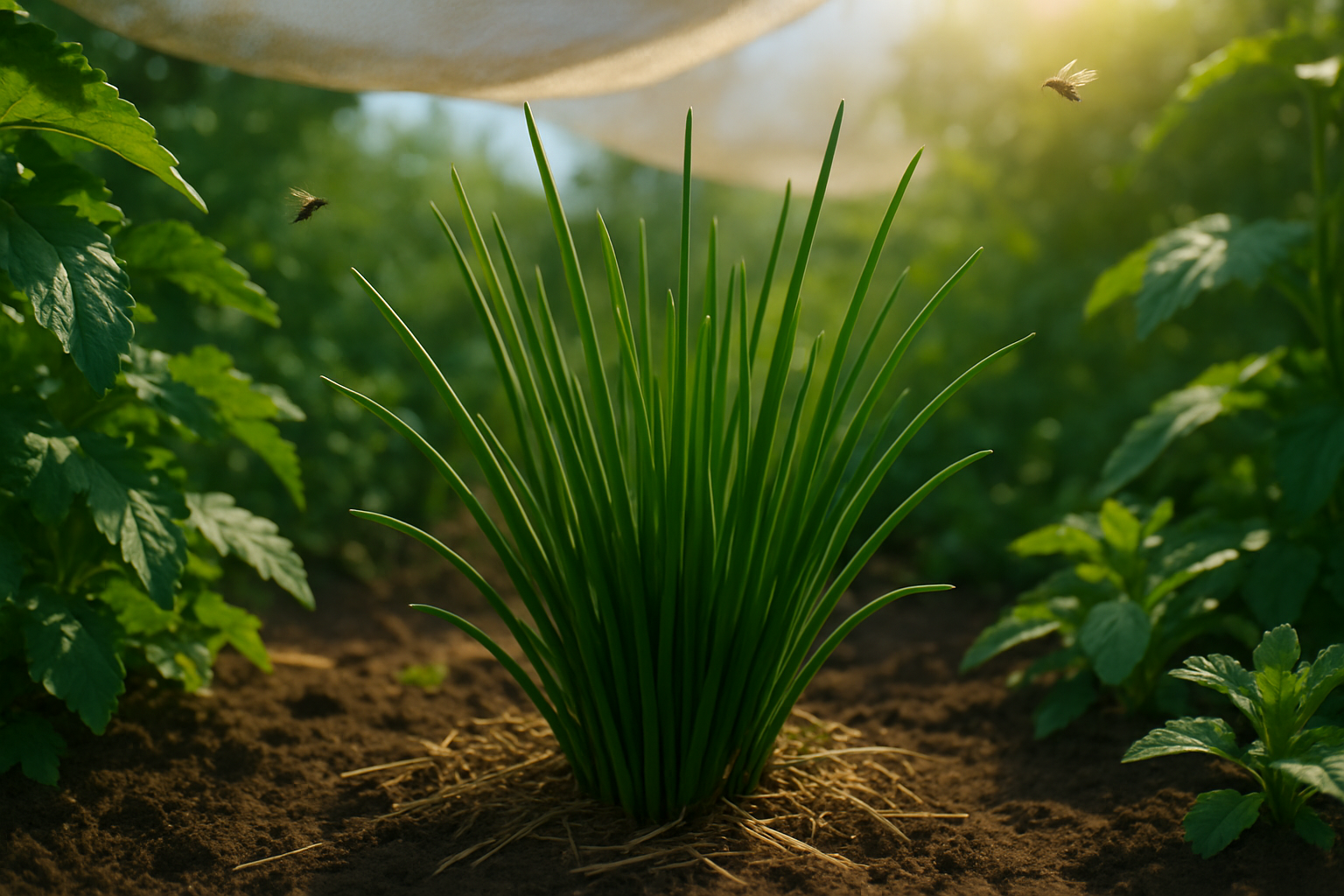Introduction
Chives hot climate gardeners often wonder if these delicate, onion-flavored herbs can really thrive under blazing sun and soaring temperatures. Loved for their fresh, mild taste, chives are a staple in salads, soups, baked potatoes, and as a garnish—bringing a subtle kick without overwhelming a dish. But can you grow chives successfully when the mercury climbs?
While chives are generally seen as a cool-weather perennial, there are surprising benefits to growing them in hot climates. For one, they tend to resist many common pests found in more temperate zones. When given the right care, their rapid growth can turn a few plants into a lush, edible patch almost overnight.
However, heat can also bring challenges: soil can dry out quickly, and strong sun may singe delicate leaves if precautions aren’t taken. Gardeners in hot regions need to adapt their approach, but with a few clever tricks—like providing afternoon shade and keeping soil consistently moist—chives can flourish even under intense heat.
In this post, we’ll explore real-world tips for nurturing these versatile herbs so you can enjoy a robust chive harvest, no matter how high the thermometer climbs.
Understanding Chives and Their Climate Preferences
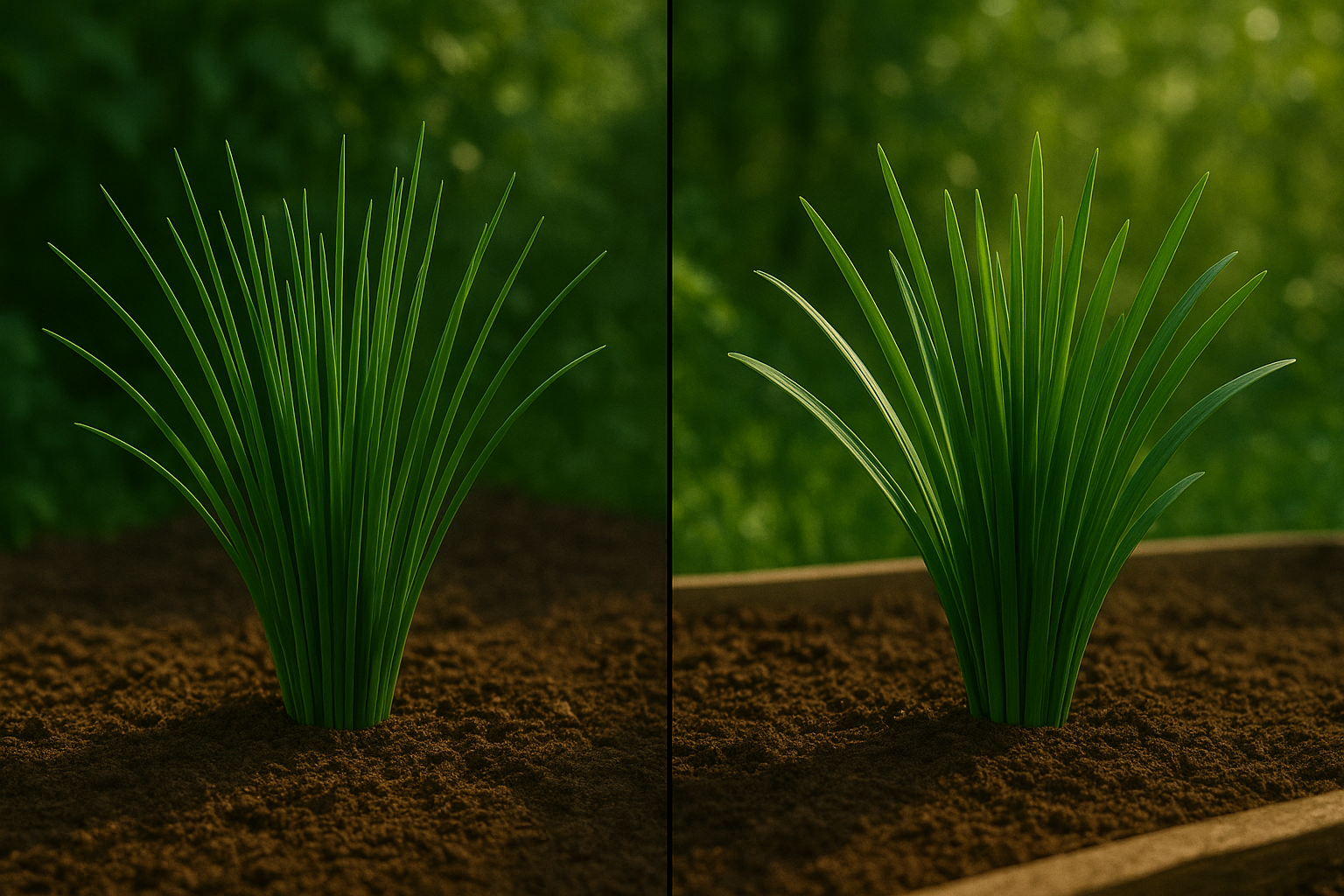
Chives are a versatile and easy-to-grow herb, with two main types that home gardeners should know: common chives (Allium schoenoprasum) and garlic chives (Allium tuberosum).
Common chives have slender, hollow leaves and a mild onion flavor—perfect for garnishing eggs or salads—while garlic chives offer flatter leaves with a hint of garlic, making them great for stir-fries and Asian dishes.
Both types thrive in well-drained soil and need plenty of sunlight, aiming for at least six hours a day. Chives prefer moderate temperatures, growing best in the 60–75°F (15–24°C) range. When temperatures climb above 80°F (27°C), chives can suffer from heat stress, which quickly affects their health and flavor.
During hot spells, you might notice wilted leaves that droop or curl, yellowing or browning tips, and overall stunted growth—the plants may stop producing fresh shoots or seem to shrink back into the soil.
To help your chives beat the heat, you can:
- Water them in the early morning
- Add mulch to keep roots cool
- Consider moving potted chives to an area with afternoon shade
By watching for early signs of heat stress and making quick adjustments, you can keep both common and garlic chives healthy and productive from spring through fall. Remember, preventing prolonged exposure to high heat is key to delicious, vibrant chives all season long.
Selecting the Right Location
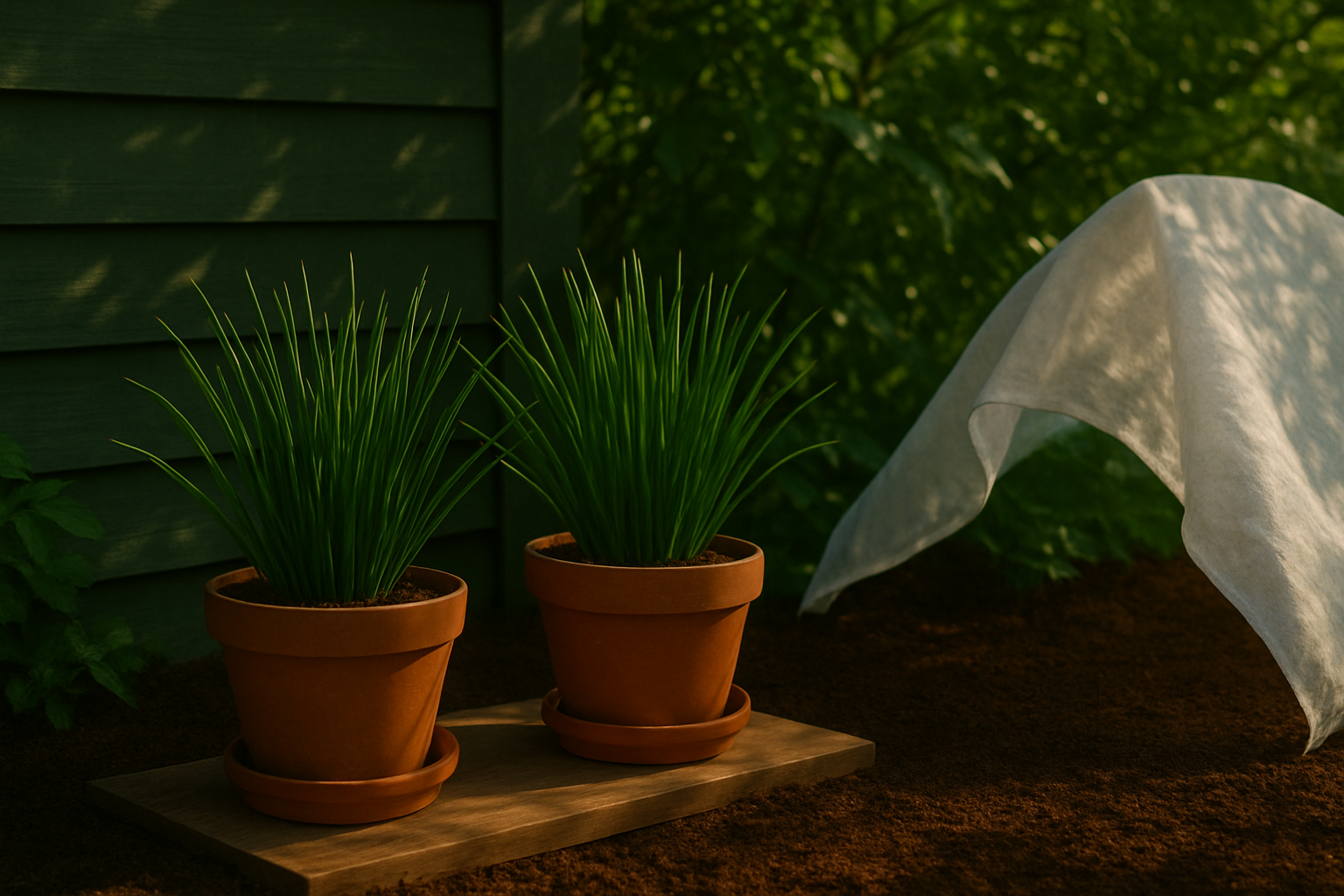
Chives thrive best when they receive plenty of sunlight—ideally, at least six hours of direct sun each day. However, if you live in a hot climate, harsh afternoon sun can stress your plants and cause their leaves to droop or scorch.
To set your chives up for success, choose a garden spot that gets bright morning light but is shaded during the hottest part of the afternoon. This shade can come from a neighboring fence, wall, or tall companion plants. Alternatively, you can use a lightweight shade cloth to protect your chives during peak sun hours; this simple adjustment helps prevent heat stress and keeps the foliage tender.
If you’re growing chives indoors in a sunny area, windowsills that receive bright but indirect light are ideal. A south-facing window works well in cooler months, but if the sun becomes too intense in summer, consider moving pots to an east-facing window or drawing sheer curtains during midday.
Outdoor pots offer another flexible option—just move them as needed to balance light and shade. By staying attentive to your local conditions and being willing to adjust, you’ll keep your chives lush and productive throughout the season, no matter how hot it gets outside.
Soil Preparation and Watering Strategies for Heat
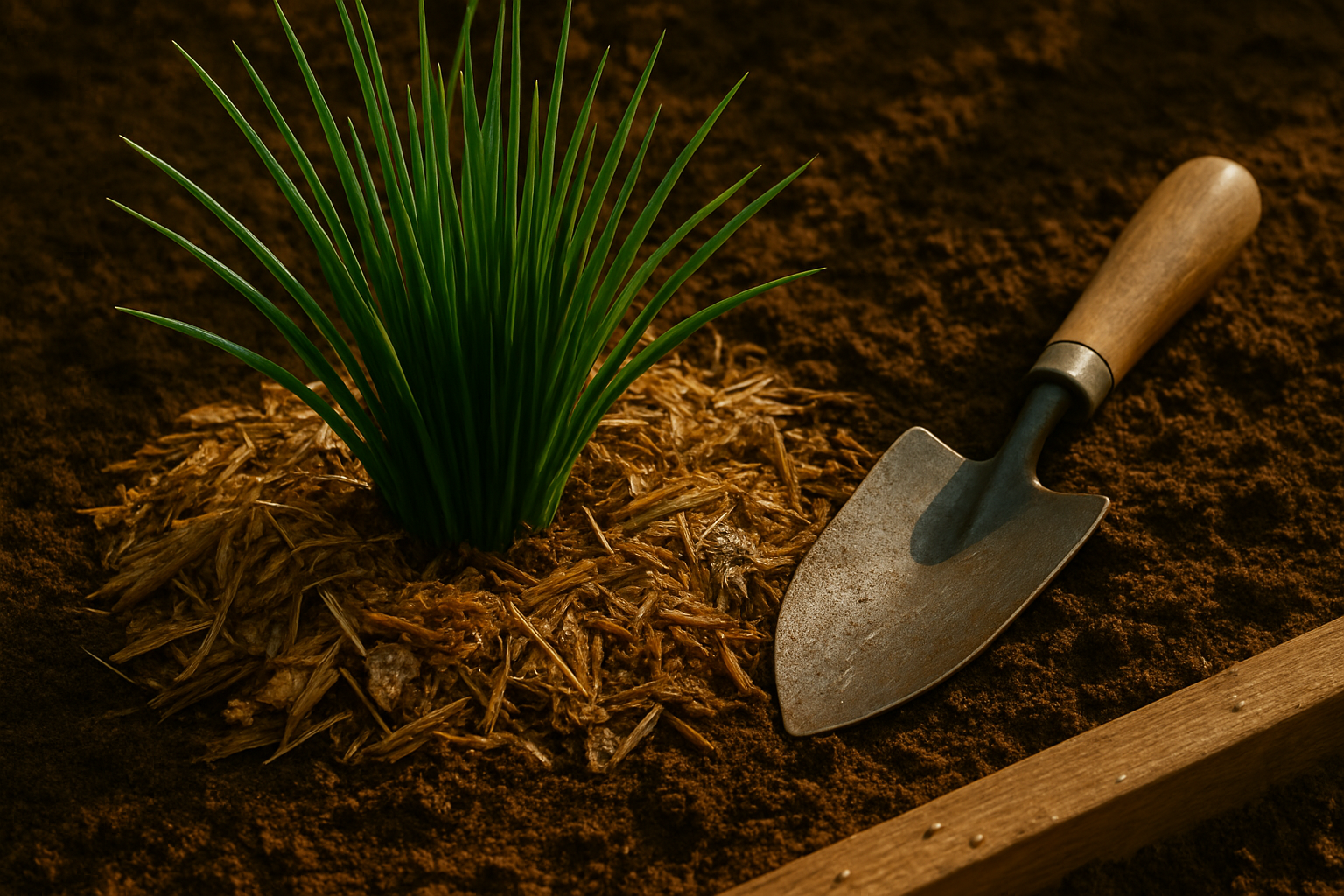
For healthy chives, start with well-draining, fertile soil—think loose, crumbly earth that feels rich to the touch. Aim for a neutral to slightly acidic pH, ideally between 6.0 and 7.0, which helps chives absorb nutrients easily. You can quickly test your soil’s pH with inexpensive kits from garden centers.
Mix in plenty of compost or aged manure before planting for nutrients and improved water retention. As temperatures rise, mulching becomes essential. Spread a two-inch layer of straw, grass clippings, or shredded leaves around the base of your chives to help keep the soil cool and damp, even during intense heat waves. This simple step also discourages weeds and keeps root systems stable.
When watering, consistency is key—chives prefer evenly moist (not soggy) soil. Check with your finger about an inch down, and water deeply when the soil feels dry at that level. Early morning is the best time to water, allowing leaves to dry out during the day and reducing the risk of fungal diseases.
Focus your watering at the base of the plants rather than overhead; this ensures roots get the needed moisture while keeping the foliage dry. In extreme heat, you may need to water every few days, but avoid shallow, frequent sprinklings—deep soaks encourage strong roots that tolerate drought better.
With these strategies, your chives will stay lush and productive, even when the heat is on.
Managing Heat Stress and Protecting Chives
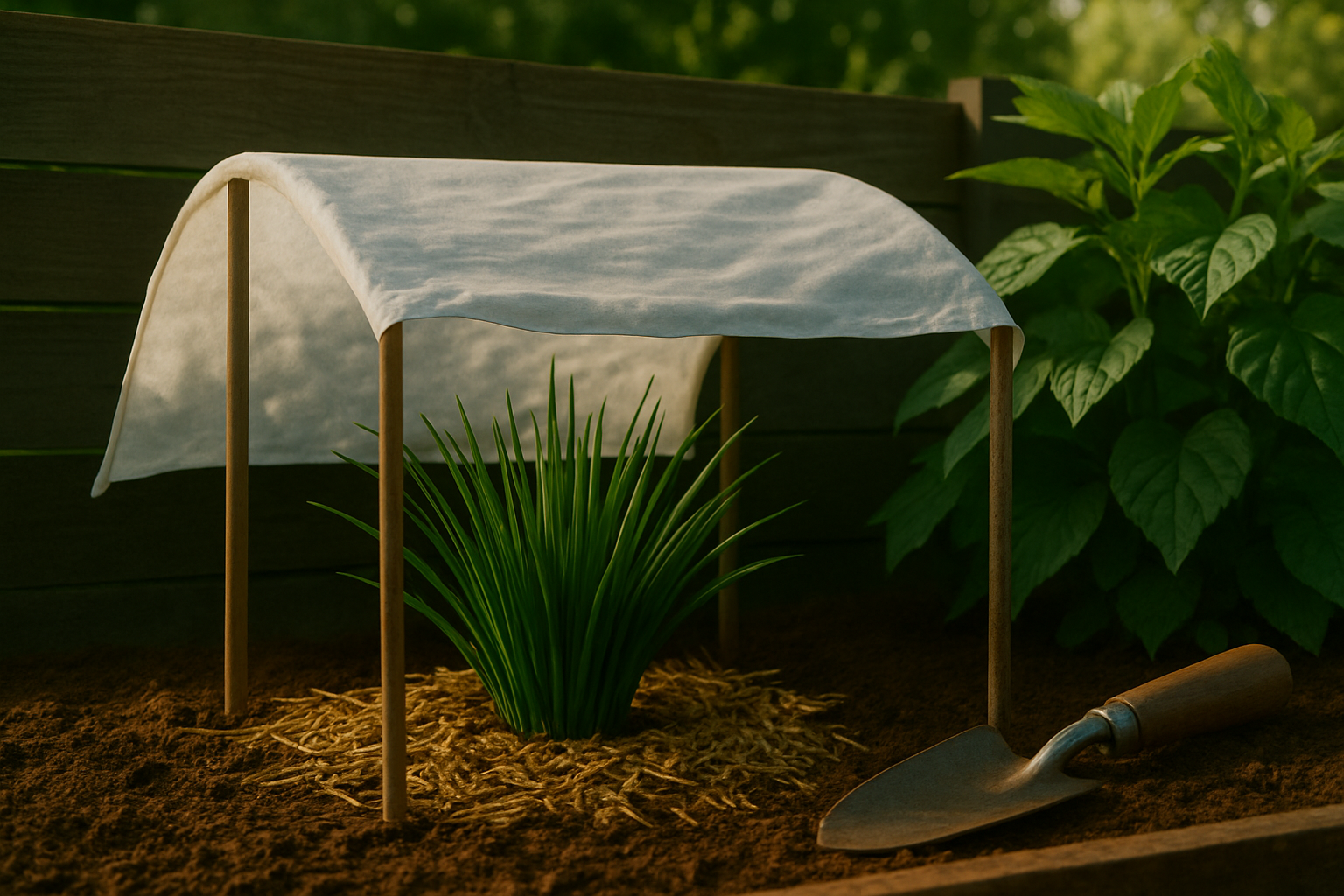
Chives are hardy, but intense summer heat can still take a toll. One of the easiest ways to shield your chives is by setting up simple shade structures using garden fabric, old bed sheets, or commercially available shade cloth. Just drape or suspend these above your chive patch during the hottest part of the day to filter out harsh sunlight.
Windbreaks are equally helpful. Try fences, hedges, or even rows of taller vegetables planted nearby to reduce hot, drying winds that can dehydrate your chives.
Watch closely for signs of heat damage, such as wilting, yellow or brown leaf tips, and slowed growth—these are cues your chives are stressed and need help.
Water early in the morning so the soil stays moist throughout the day, but avoid soaking the foliage, which can lead to rot. After a heatwave, trim away any crispy or burnt leaves to encourage fresh growth and prevent disease.
Applying a light mulch of straw or shredded leaves helps the soil retain moisture and keeps roots cooler. If your chives have suffered, feed them with a balanced, diluted liquid fertilizer to help them recover.
By acting quickly and providing a combination of shade, shelter, and good care, you can keep your chive plants thriving even when temperatures rise.
Chive Care, Harvest, and Common Issues in Hot Climates
Caring for chives in hot climates requires a bit more attention to routine maintenance. Trim them back regularly to keep the foliage fresh, and snip flower buds promptly to prevent tough, bitter stalks from forming. Fertilize lightly with a nitrogen-rich liquid feed every few weeks to encourage leafy growth. If your clump becomes crowded or less productive, dig up and divide the plants in early spring or late fall to rejuvenate them.
When harvesting, always use clean scissors to cut chive leaves about an inch above the base, taking no more than one-third of the plant at a time. This encourages continual regrowth and ensures a steady supply of fresh herbs.
Dealing with Pests and Diseases
In hot, dry conditions, watch out for thrips and onion maggots, as they become more active as temperatures rise. Prevent infestations by spacing plants to improve airflow, using straw mulch, and promptly removing any dead foliage.
To avoid fungal issues like downy mildew, water early in the day and avoid wetting the leaves whenever possible. If diseases do appear, trim away affected parts and treat the plants with an organic fungicide.
With these habits, your chives can thrive and stay productive all summer long, even in the heat.
Conclusion
Growing chives successfully in hot climates comes down to a few simple strategies: provide afternoon shade, keep the soil consistently moist but well-drained, and use mulch to keep the roots cool. Harvest regularly to encourage new growth, and consider growing chives in containers so you can move them to shadier spots during extreme heat.
The reward is worth the effort—fresh homegrown chives add a burst of oniony flavor to everything from salads to baked potatoes, and their purple blossoms attract bees and other pollinators to your garden. With a little care, you can enjoy these hardy herbs almost year-round, even in the heat.
For more detailed care guides and creative recipe ideas, check out university extension resources or gardening websites like the RHS or Master Gardeners. Growing chives is both simple and endlessly rewarding for kitchen gardeners of any level.
